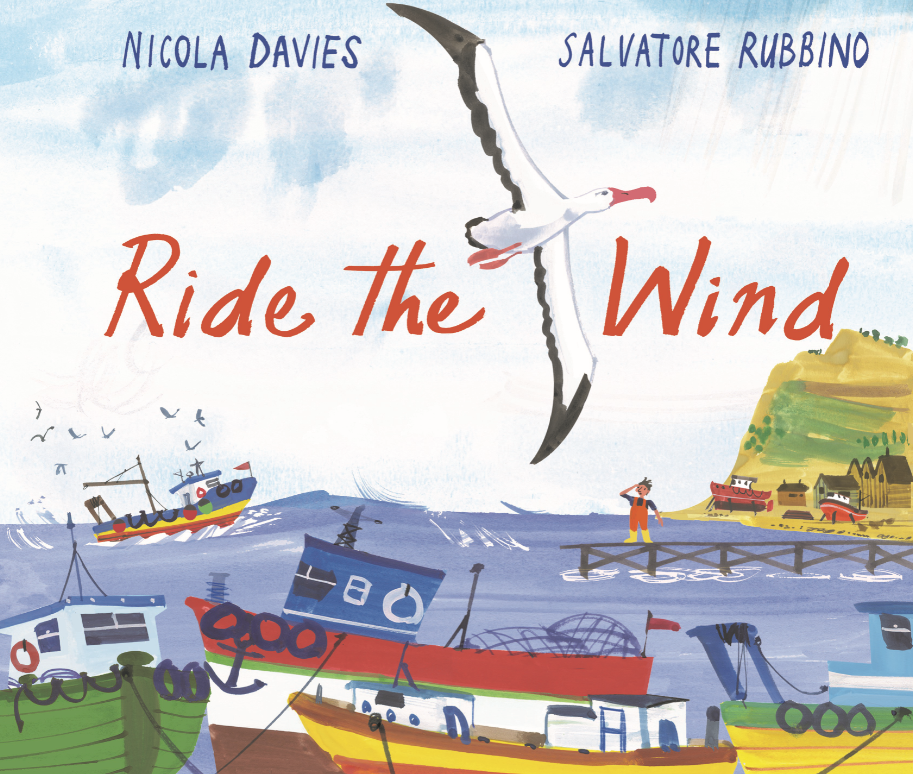
Looking is a wonderful thing
As a picture book illustrator, I spend my day drawing and thinking about stories. My task is to shape a tangible graphic world where story events and characters can thrive, a world that the reader can believe in. Pictures are a perfect storytelling tool and stories help to give a context to experience and our lives. We simply can’t live without them!
Looking at the world around me is where my ideas come from. We live a good deal of our lives in the humdrum (punctuated every now and then, perhaps, with something extraordinary) but I find the ‘everyday’ and the tiniest events inspiring and full of poetry. I carry a notebook with me wherever I go, ready to capture those special moments. I like to collect characters – we are all interesting and everyone comes with a story, and I have certain themes that I often return to. Musicians give the city a rhythm; they perform to be noticed and I have pages full of expressive players, particularly accordionists, so I hope one day to weave my musical drawings into a tale.
I’ve overheard some astonishing phone conversations whilst out walking – albeit only one half of the exchange (if you’re an illustrator you’re allowed to be nosey!). We continue to be expressive, pulling faces and gesturing vigorously, even when we can’t see the other person on the line, and this gives me the chance to record some wonderfully animated behaviour. I can never pass a group of gossiping ladies without straining to hear what they’re talking about and capture them in a picture. To be an illustrator, it’s also necessary to cultivate a sense of wonder. This starts with a willingness to look with curiosity and to train the eye to find meaning in everything around you. I’m still learning.
Marshalling your creativity
The text for a story arrives, via the publisher rather than directly from an author. By the time it reaches me the text has already undergone a rigorous process of rewriting, and has a well-crafted plot and clear point of view. Being invited to illustrate someone else’s words is like collaborating with someone else’s imagination – it’s extremely exciting. I may sometimes meet the author and discuss the project, but our paths don’t cross very often. Our relationship is via the publisher, who realises that I need to respond to the text in my own way.
I don’t start work straight away. Instead I let the story sink in over the next few days. I will try to visit places or find aspects of the story that I can see and draw. I don’t want to illustrate the text word for word (like a list) but instead I slide up to the story … sideways. I’m trying to find a way into the heart of the story. I’m looking for interesting things to describe, dramatic moments full of visual friction with the potential for mark-making or moments that might allow me to draw the things that I like and a chance to celebrate beauty.
My first drawing attempts for a book are usually quite unrefined. There is no process or formula an illustrator has to follow, or indeed that I follow, for each new project. In every case, I’m meeting the book’s characters for the first time, getting to know them and the world they inhabit. I might simply respond to one line or phrase to begin with, until eventually I feel confident enough to start mapping a composition on the page. A book takes time…
Salvatore Rubbino graduated from the Royal College of Art in 2005. His first picture book, A Walk in New York, was published in 2009 by Candlewick Press, followed by A Walk in London in 2011. His other books, all published by Walker Books, include Just Ducks! (2012) written by Nicola Davies, A Walk in Paris (2014), A Book of Feelings (2015), Our Very Own Dog (2016) written by Amanda McCardie and Harry Miller’s Run (2015) by David Almond. His latest book, Ride the Wind written by Nicola Davies will be published in August 2020 by Walker Books. Salvatore teaches at Southampton Solent University. He received a Booktrust Best New Illustrators Award in 2011.
This is an abridged version of an article taken from the Children's Writers & Artists' Yearbook 2021, which is available now from Bloomsbury.com
Comments